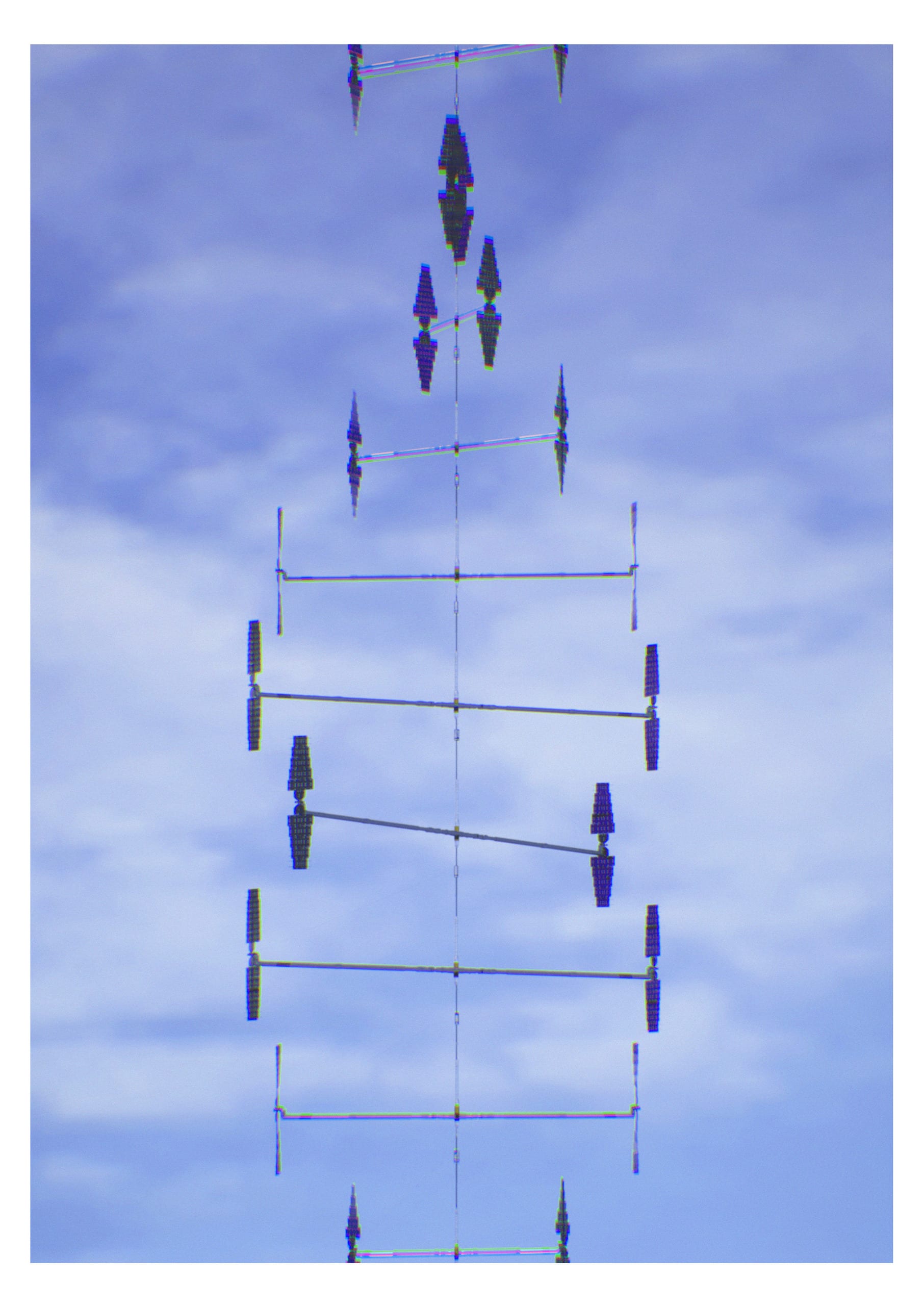Both of my projects at the RCA speculate about a near future scenario and its architectural implications. This project, Ephemeris, explores the ways in which Solar Geoengineering, a proposed method of counteracting the effects of climate change, would have architectural consequences such as vast infrastructure and the manufacture of an artificial atmosphere. In ADS 5 last year, Strata:Ponic proposed housing allotments in an industrial high rise in response to the increasing shortage of available land for allotments and buildings in London.
In both cases, these scenarios prompted an intervention which uses movement as an architectural response to these conditions. In Ephemeris, a giant balloon lifts a pipe high up in the atmosphere to disperse particles which move through the sky. Blades spin around the pipe to generate electricity and to help lift the pipe. In Strata:Ponic, the need to irrigate and to provide different climatic conditions to the allotments created a rotating façade panel which collected and distributed water, animating each elevation.
Previous to the RCA, I graduated from the University of Kent in 2019 and then worked at Atelier COLE, Phnom Penh and Hollaway Studio, London.














